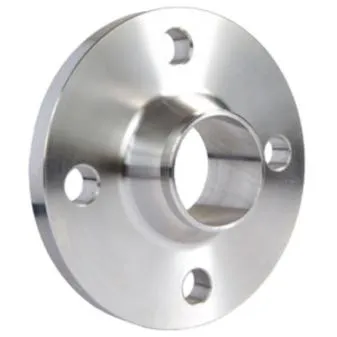-
Cangzhou Yulong Steel Co., Ltd.
-
Phone:
+86 13303177267 -
Email:
admin@ylsteelfittings.com
- English
- Arabic
- Italian
- Spanish
- Portuguese
- German
- kazakh
- Persian
- Greek
- French
- Russian
- Polish
- Thai
- Indonesian
- Vietnamese
- Zulu
- Korean
- Uzbek
- Hindi
- Serbian
- Malay
- Ukrainian
- Gujarati
- Haitian Creole
- hausa
- hawaiian
- Hebrew
- Miao
- Hungarian
- Icelandic
- igbo
- irish
- Japanese
- Javanese
- Kannada
- Khmer
- Rwandese
- Afrikaans
- Albanian
- Amharic
- Armenian
- Azerbaijani
- Basque
- Belarusian
- Bengali
- Bosnian
- Bulgarian
- Catalan
- Cebuano
- China
- China (Taiwan)
- Corsican
- Croatian
- Czech
- Danish
- Esperanto
- Estonian
- Finnish
- Frisian
- Galician
- Georgian
- Kurdish
- Kyrgyz
- Lao
- Latin
- Latvian
- Lithuanian
- Luxembourgish
- Macedonian
- Malgashi
- Malayalam
- Maltese
- Maori
- Marathi
- Mongolian
- Myanmar
- Nepali
- Norwegian
- Norwegian
- Occitan
- Pashto
- Dutch
- Punjabi
- Romanian
- Samoan
- Scottish Gaelic
- Sesotho
- Shona
- Sindhi
- Sinhala
- Slovak
- Slovenian
- Somali
- Sundanese
- Swahili
- Swedish
- Tagalog
- Tajik
- Tamil
- Tatar
- Telugu
- Turkish
- Turkmen
- Urdu
- Uighur
- Welsh
- Bantu
- Yiddish
- Yoruba

Sep . 25, 2024 20:27 Back to list
api 5l x60 psl2 specification
Understanding API 5L X60 PSL2 Specification
The API 5L standard, developed by the American Petroleum Institute (API), defines the specifications for line pipes used in the transportation of oil and natural gas. Among the various grades and specifications, API 5L X60 PSL2 holds significant importance, particularly in pipeline construction and maintenance projects across the globe. This article aims to provide a detailed overview of the API 5L X60 PSL2 specification, its properties, applications, and relevance in the industry.
What is API 5L?
API 5L establishes the minimum requirements for the design, manufacturing, testing, and quality assurance of steel pipes used in the transportation of gases, liquids, and solids. The specification is essential for ensuring safety, reliability, and performance in pipeline applications. The L in API 5L stands for line pipe, while the X denotes a specific yield strength for the pipe material, with higher numbers indicating increased strength.
The X60 Grade
Within the API 5L specification, the X60 grade is identified by its minimum yield strength of 60,000 psi (approximately 414 MPa). This level of strength makes it suitable for high-pressure applications, facilitating the transportation of substances over long distances. The designation of X60 signifies that the pipe is made from a higher strength steel than lower grades such as X42 and X52.
PSL2 Specification
API 5L also distinguishes between two product specification levels (PSLs) PSL1 and PSL2. PSL2 offers enhanced properties compared to PSL1, including improved toughness and a stricter adherence to chemical composition standards. The PSL2 specification is particularly crucial for applications that require resistance to brittle fracture and enhanced weldability, making it a preferred choice for pipelines crossing challenging terrains and varying environmental conditions.
Chemical Composition and Mechanical Properties
The chemical composition of API 5L X60 PSL2 steel pipe is designed to provide a balance of strength, ductility, and weldability. The key elements typically include
api 5l x60 psl2 specification

- Carbon (C) Limited to a maximum of 0.24% - Manganese (Mn) Ranges from 1.20% to 1.60% - Phosphorus (P) Limited to a maximum of 0.025% - Sulfur (S) Limited to a maximum of 0.015%
In terms of mechanical properties, API 5L X60 PSL2 pipes display excellent yield and tensile strengths, with minimum yield strength set at 60,000 psi and minimum tensile strength at 74,000 psi (approximately 510 MPa). Additionally, the elongation property ensures that the material can withstand stretching without breaking, which is vital in pipeline installations subject to stress and movement.
Applications
API 5L X60 PSL2 pipes are widely used in various applications, primarily in the oil and gas industry. They are employed in the following areas
1. Hydrocarbon Transmission Pipelines transporting oil and natural gas over long distances use X60 pipes for their strength and durability.
2. Water Distribution In some cases, X60 pipes are also used for large-scale water distribution systems, where strength is crucial.
3. Infrastructure Projects X60 is favored in construction projects requiring high-performance materials for structural integrity and safety.
4. Subsea Applications The toughness and resistance to external pressure make X60 PSL2 suitable for subsea pipelines.
Conclusion
API 5L X60 PSL2 specification encompasses a range of critical attributes making it a vital component in the design and construction of modern pipelines. Its combination of high yield strength, excellent toughness, and strict manufacturing and testing standards contributes to the safety and efficiency of transporting liquids and gases worldwide. In an era where energy demands continue to rise, understanding and utilizing specifications like API 5L X60 PSL2 is essential for maintaining the integrity and performance of pipeline infrastructures globally. As the industry evolves, adherence to such standards will remain crucial in addressing the growing technical challenges faced in pipeline engineering.
Latest news
-
ANSI 150P SS304 SO FLANGE
NewsFeb.14,2025
-
ASTM A333GR6 STEEL PIPE
NewsJan.20,2025
-
ANSI B16.5 WELDING NECK FLANGE
NewsJan.15,2026
-
ANSI B16.5 SLIP-ON FLANGE
NewsApr.19,2024
-
SABS 1123 FLANGE
NewsJan.15,2025
-
DIN86044 PLATE FLANGE
NewsApr.19,2024
-
DIN2527 BLIND FLANGE
NewsApr.12,2024
-
JIS B2311 Butt-Welding Fittings LR/SR 45°/90° /180°Seamless/Weld
NewsApr.23,2024











